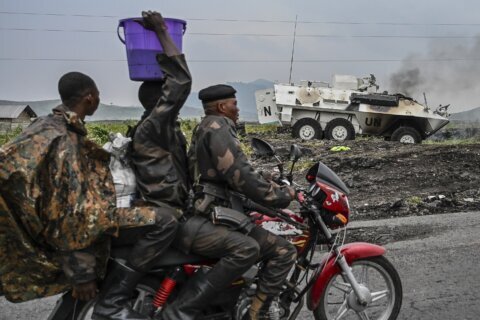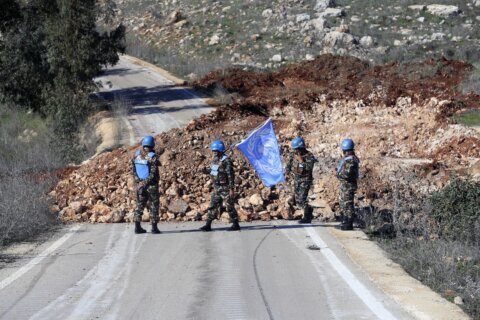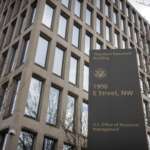AQABA, Jordan (AP) — Top U.S. officials were in the Middle East on Thursday, pushing for stability in Syria and an end to Israel’s 14-month war in the Gaza Strip in a last-ditch diplomatic push by the outgoing Biden administration before President-elect Donald Trump takes office in a few weeks.
Secretary of State Antony Blinken was in Jordan and Turkey for talks on how to ensure a peaceful transition of power in Syria following the ouster of longtime President Bashar Assad, while White House national security adviser Jake Sullivan was in Israel in a bid to wrap up a ceasefire with Hamas militants.
A ceasefire would give President Joe Biden a final diplomatic victory after a turbulent term in which his administration has been unable to halt a brutal war that has claimed tens of thousands of lives in Gaza and plunged the territory into a humanitarian crisis.
Trump has demanded the immediate release of hostages, threatening on social media that otherwise there would be “HELL TO PAY,” and has urged the U.S. not to get involved in Syria, where some 900 troops are based to combat the Islamic State militant group.
U.S. expresses hope for a Gaza ceasefire
Speaking to reporters in Tel Aviv, Sullivan expressed cautious optimism that conditions were ripe for halting the long-running conflict before the Biden administration leaves office.
“I wouldn’t be here now if I didn’t think this thing was just waiting until after January 20,” he said of when Trump will be inaugurated.
The war erupted with Hamas’ Oct. 7, 2023, cross-border attack, in which militants killed some 1,200 people in Israel and took 250 others hostage. Israel’s retaliatory offensive in Gaza has killed nearly 45,000 Palestinians, more than half of them women and children, according to Gaza health officials, caused widespread displacement and led to severe hunger across the territory.
U.S.-led ceasefire efforts have repeatedly faltered throughout the war, with the warring sides blaming each other for the failure.
Israel has said it is seeking the destruction of Hamas’ governing and military capabilities, at times pressing ahead with the offensive in the face of U.S. calls for restraint. Hamas, meanwhile, has stuck to its demands that any ceasefire include a permanent end to the fighting and full withdrawal of Israeli forces from Gaza.
The U.S. has backed Israel with key military and diplomatic support. But at times, it also has appeared helpless in urging Israel to minimize civilian casualties and to enable the delivery of more humanitarian aid into Gaza.
Sullivan said the rapid-fire changes across the region have improved the chances for success.
He said Israel’s ceasefire with Hezbollah last month, ending more than a year of fighting, the collapse of Syria’s government and the heavy blow Israel has inflicted on Hamas have all changed the negotiating climate.
He also said there has been good cooperation with the incoming Trump administration, with widespread agreement between them.
“The surround sound of these negotiations is different today than it has been in the past,” Sullivan told reporters after meeting with Prime Minister Benjamin Netanyahu.
“I got the sense from the prime minister that he’s ready to do the deal,” Sullivan added. “We see movement from Hamas.”
Sullivan is now scheduled to head to Qatar and Egypt, which have served as mediators throughout the war.
Any deal would include the release of hostages held by Hamas, an exchange of Palestinian prisoners held by Israel and a surge in badly needed humanitarian aid into Gaza. Israel says Hamas is holding about 100 hostages — at least one-third of whom are believed to have died.
Seeking stability in Syria
As Sullivan was in Israel, Blinken met with Jordanian and Turkish leaders to push for a peaceful transition of power in post-Assad Syria.
“We’re back in the region at a time of both real promise but also peril for Syria and for its neighbors,” Blinken told reporters in Aqaba, Jordan, after meeting with King Abdullah II.
He said the U.S. was working with its regional partners to help Syria “transition away from Assad’s brutal dictatorship” and toward a new government that isn’t dominated by any single religious or ethnic group, by an outside power or the Islamic State militant group.
“We’re determined to do everything we can, working in close coordination with partners, to help the Syrian people realize that aspiration,” Blinken said.
Syria is home to an array of armed groups with competing interests and allies.
In northern Syria, U.S.-backed Kurdish separatists are battling to fend off fighters supported by Turkey. In the country’s center and northeast, the extremist Islamic State group maintains a presence that generates concern for the U.S. And the rebels, hailing mainly from the Sunni Muslim majority in Syria, face the daunting task of creating a transitional government for the war-ravaged country.
The leader of Syria’s biggest rebel faction is a former al-Qaida commander whose Hayat Tahrir al-Sham group is poised to chart the country’s future. The U.S. and the U.N. have designated the hardline Sunni Islamist group a terrorist organization.
The goal of creating a free and pluralistic Syria will be a challenge given the bad blood stretching across Syria’s sectarian lines after over half a century of Assad family rule and more than 13 years of civil war that claimed an estimated 500,000 lives.
Blinken started his trip in Jordan, a close U.S. ally whose fragile economy has been strained over the years by an influx of hundreds of thousands of Syrian refugees. He then went to Turkey — a backer of Sunni rebels but a foe of the Kurds.
In a late-night meeting with Turkish President Recep Tayyip Erdogan in a VIP lounge at Ankara’s airport, Blinken pressed the importance of keeping up the fight against IS. Officials called it an effort to urge the Turks not to launch military operations against U.S.-backed Kurdish rebels who Washington believes have been critical to battling IS.
Blinken “emphasized the need to ensure the coalition to defeat ISIS can continue to execute its critical mission,” the State Department said, using another acronym for the Islamic State group.
How the U.S. sees Israel’s moves in Syria
Israel, meanwhile, has sent troops into Syria — its northern neighbor — and seized a former buffer zone that had been demilitarized since a 1974 truce. Israel has described it as defensive, meant to protect its border and prevent armed groups from seizing weapons left behind by Assad’s army.
Netanyahu said Thursday that the move was temporary. But he said Israel would remain inside Syria until another party can secure the border, raising the likelihood of a prolonged and open-ended presence.
Sullivan tried to play down the Israeli move, noting that Assad was toppled just days ago and it is too early to jump to any conclusions.
But Blinken was more cautious as he called for restraint by all regional players with interests in Syria. He said the U.S. is “already talking to Israel” and others about the future of Syria.
“Across the board, when it comes to any actors who have real interests in Syria, it’s also really important at this time that we all try to make sure that we’re not sparking any additional conflicts,” he said.
___
Federman reported from Jerusalem. Associated Press writer Chris Megerian contributed from Washington.
Copyright © 2025 The Associated Press. All rights reserved. This material may not be published, broadcast, written or redistributed.












